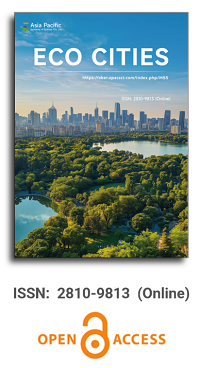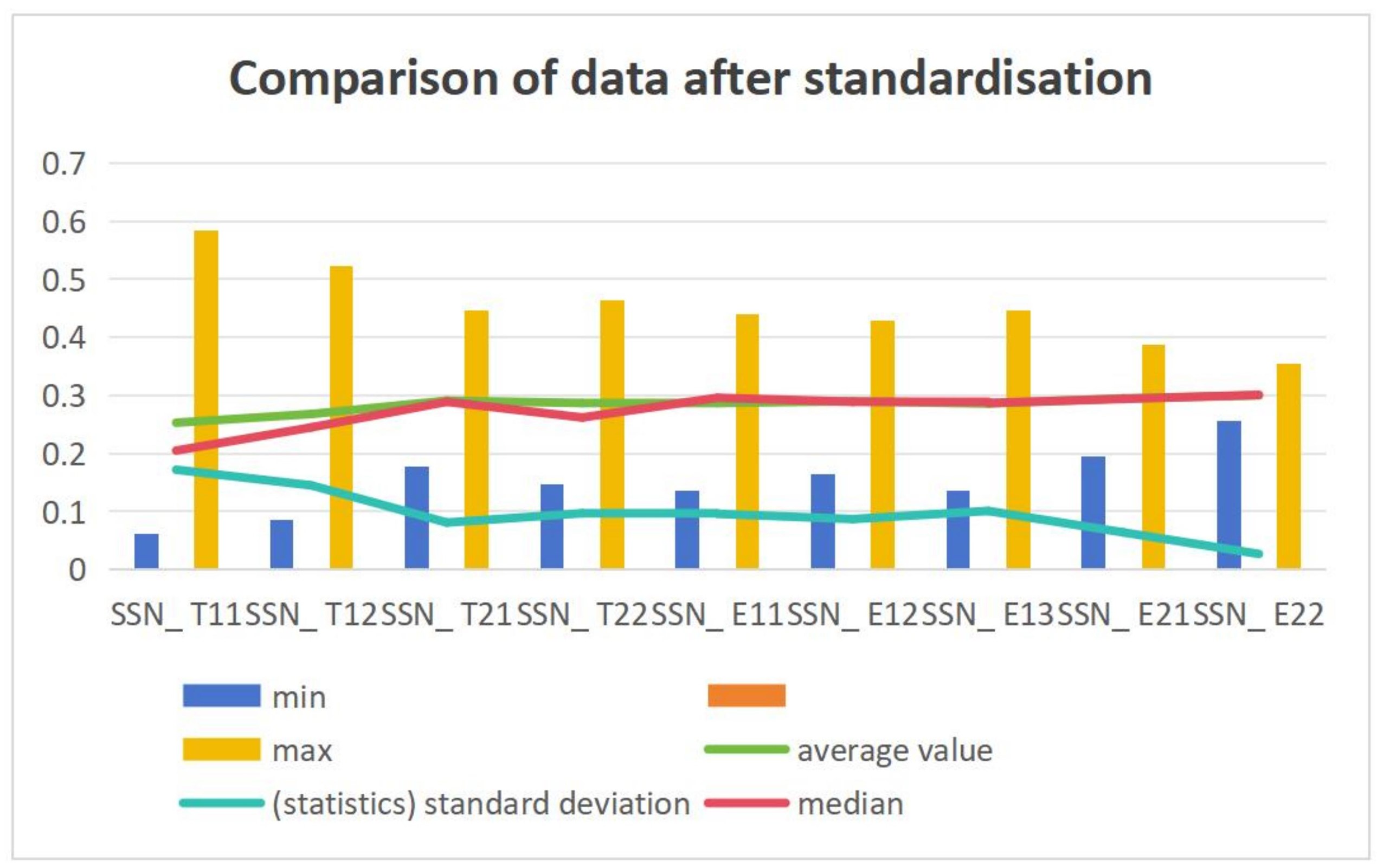


Transport-land use systems of sustainable London city
Vol 4, Issue 1, 2023
Download PDF
Abstract
Transportation and land use are interrelated and should be investigated simultaneously for sustainable urban. This paper investigates the interaction between transport and land-use systems using TRANUS model, to support the sustainable development of the London city, provide implicative information for London Mayor’s Transport Strategy (MTS), and reduce transport energy use and CO2 emissions. Three infrastructure improvements scenarios for 2025 for MTS are examined. Results show that the trips will increase from 2012 to 2025 by over 1 million. High-occupancy car, bike, rail and tube are still the main transit, and CrossRail will be increasingly recognized. The transport energy use in 2025 high scenario is the smallest compared to 2025 baseline and low scenario. The transport CO2 emissions show difference for these three 2025 scenarios, with low and high scenarios having smaller transport CO2 emissions than baseline. These have informative implications for UK national infrastructure plans, and suggest that accounting environmental benefits of infrastructures will contribute to reduce the underinvestment in infrastructure.
Keywords
References
- United Nations. World urbanization prospects: The 2018 revision. Available online: https://esa.un.org/unpd/wup/ (accessed on 25 March 2019).
- Spiekermann K, Wegener M. Evaluating urban sustainability using land-use transport interaction models. European Journal of Transport and Infrastructure Research 2004; 4: 251–272. doi: 10.18757/ejtir.2004.4.3.4268
- Godschalk D. Land use planning challenges: coping with conflicts in visions of sustainable development and livable communities. Journal of the American Planning Association 2004; 70: 5–13. doi: 10.1080/01944360408976334
- Keirstead J, Jennings M, Sivakumar A. A review of urban energy system models: approaches, challenges and opportunities. Renewable and Sustainable Energy Reviews 2012; 16: 3847–3866. doi: 10.1016/j.rser.2012.02.047
- International Energy Agency. World Energy Outlook 2012. International Energy Agency; 2012.
- Pye S, Daly H. Modelling sustainable urban travel in a whole systems energy model. Applied Energy 2015; 159: 97–107. doi: 10.1016/j.apenergy.2015.08.127
- Brandi A, Gori S, Nigro M, Petrlli M. Development of an integrated transport-land use model for the activities relocation in urban areas. Transportation Research Procedia 2014; 3: 374–383. doi: 10.1016/j.trpro.2014.10.018
- Acheampong RA, Silva EA. Land use-transport interaction modelling: a review of the literature and future research directions. The Journal of Transport and Land Use 2015; 8: 11–38. doi: 10.5198/jtlu.2015.806
- Inturri G, Ignaccolo M, Pira ML, et al. Influence of accessibility, land use and transport policies on the transport energy dependence of a city. Transportation Research Procedia 2017; 25C: 3277–3289. doi: 10.1016/j.trpro.2017.05.165
- Lowry SA. A model of the metropolis. Available online: https://www.rand.org/pubs/research_memoranda/RM4035.html (accessed on 29 January 2023).
- Wilson AG. Entropy in urban and regional modelling. Pion. Limited; 1970.
- Zhou J, Lin J, Cui S, et al. Exploring the relationship between urban transportation energy consumption and transition of settlement morphology: A case study on Xiamen Island, China. Habitat International 2013; 37: 70–79. doi: 10.1016/j.habitatint.2011.12.008
- Kii M, Nakanishi H, Nakamura K, Doi K. Transportation and spatial development: An overview and a future direction. Transport Policy 2016; 49: 148–158. doi: 10.1016/j.tranpol.2016.04.015
- Li P, Zhao P, Brand C. Future energy use and CO2 emissions of urban passenger transport in China: A travel behaviour and urban form based approach. Applied Energy 2018; 211: 820–842. doi: 10.1016/j.apenergy.2017.11.022
- Transport for London. Transport 2025: Transport Vision for a Growing World City. Transport for London; 2006.
- Transport for London. Travel in London: Report 6. Available online: http://www.tfl.gov.uk/cdn/static/cms/documents/travel-in-london-report-6.pdf (accessed on 10 November 2014).
- Mayor of London. Urban Greening. Available online: https://www.london.gov.uk/what-we-do/environment/parks-green-spaces-and-biodiversity/urban-greening# (accessed on 20 April 2019).
- Infrastructure UK. National infrastructure plan 2011. Available online: https://assets.publishing.service.gov.uk/media/5a7b177e40f0b66a2fc05190/nip_2011.pdf (accessed on 29 January 2023).
- City of London. Local plan 2015. Available online: https://www.cityoflondon.gov.uk/services/environment-and-planning/planning/planning-policy/local-plan/Documents/local-plan-2015.pdf (accessed on 20 April 2019).
- de la Barra T. Integrated Land Use and Transport Modelling. Cambridge University Press; 1989.
- de la Barra T. TRANUS user guide. Available online: http://www.tranus.com/tranus-english/download-install (accessed on 10 August 2014).
- Potter S. Transport energy and emissions: Urban public transport. In: Hensher D, Button K (editors). Handbook of Transport and the Environment. Elsevier; 2003. Volume 4. pp. 247–262.
- DEFRA (UK Department for Environment Food & Rural Affairs). Government GHG conversion factors for company reporting. Available online: http://www.ukconversionfactorscarbonsmart.co.uk/ (accessed on 27 October 2015).
- Cairns S, Sloman L, Newson C, et al. Smarter choices: Assessing the potential to achieve traffic reduction using ”soft measures”. Transport Reviews 2008; 28: 593–618. doi: 10.1080/01441640801892504
Supporting Agencies
Copyright (c) 2023 Shifeng Wang, Sicong Wang, Hui Wang

This work is licensed under a Creative Commons Attribution 4.0 International License.

This site is licensed under a Creative Commons Attribution 4.0 International License (CC BY 4.0).

Chinese Academy of Sciences, China
Indexing & Archiving
Asia Pacific Academy of Science Pte. Ltd. (APACSCI) specializes in international journal publishing. APACSCI adopts the open access publishing model and provides an important communication bridge for academic groups whose interest fields include engineering, technology, medicine, computer, mathematics, agriculture and forestry, and environment.



.jpg)

.jpg)



